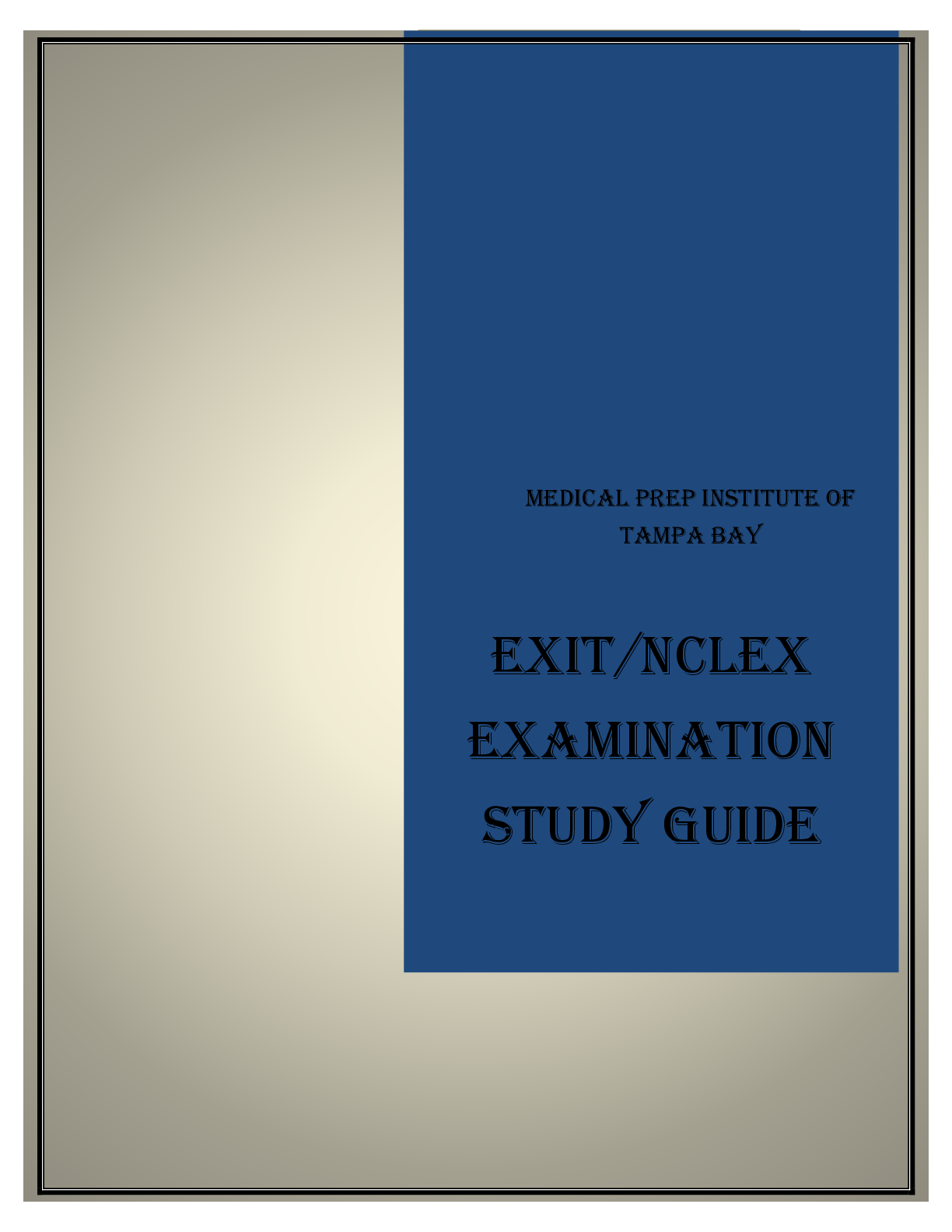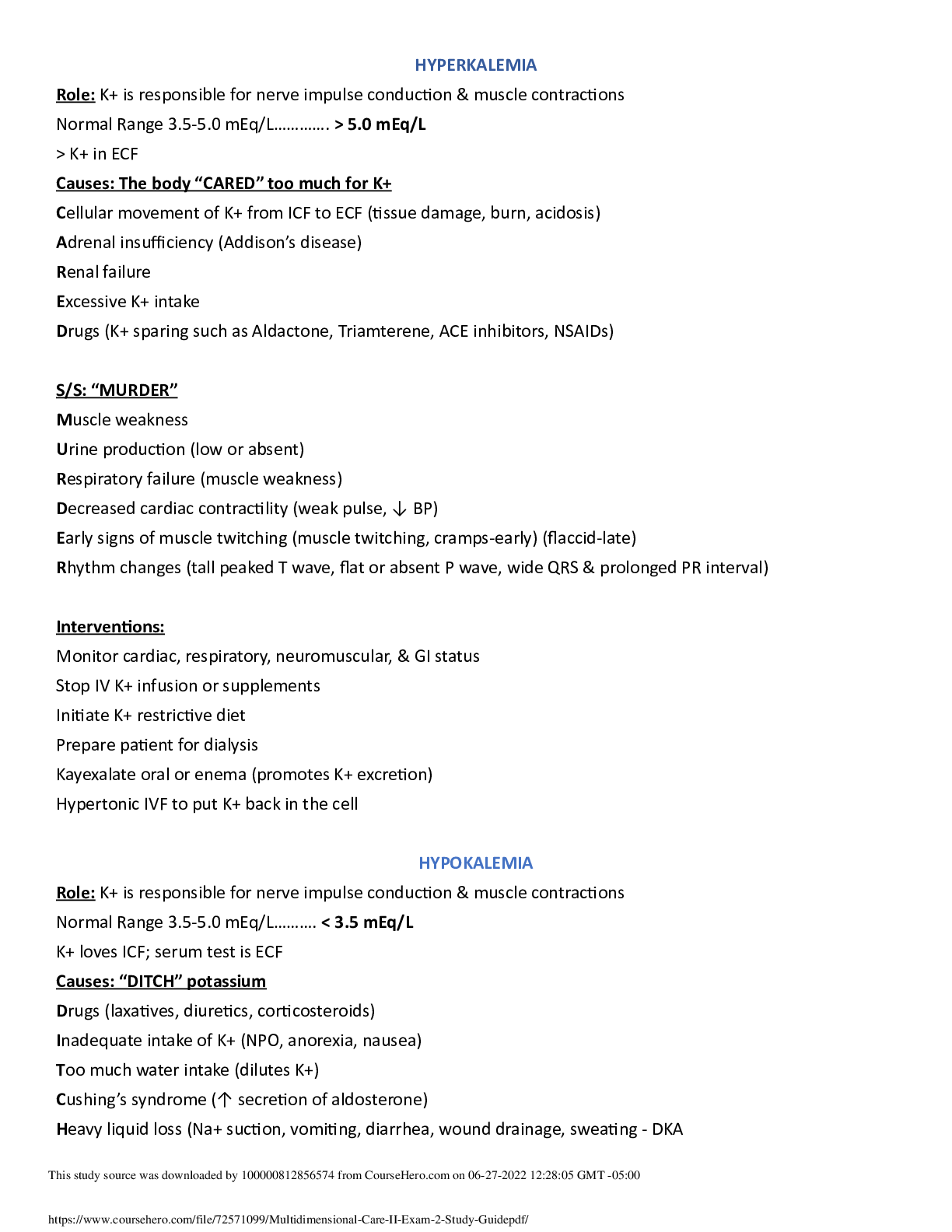Biology > STUDY GUIDE > Central Technical School BIOLOGY 1000 Lab # 1 - BIOL 1001 S2 2020 - Dichotomous Key. (All)
Central Technical School BIOLOGY 1000 Lab # 1 - BIOL 1001 S2 2020 - Dichotomous Key.
Document Content and Description Below
Lab #1: Creating a Dichotomous Key A dichotomous key is a device that can be used to easily identify an unknown organism. The word dichotomous comes from two Greek words that together mean, "divi... ded in two parts". A dichotomous key consists of a series of two-part statements that describe characteristic of organisms. At each step of a dichotomous key the user is presented with two “opposite” choices. As the user makes a choice about a particular characteristic of an organism, the user is led (using numbered indicators) to a new branch of the key (which may or may not be immediately below). Eventually, the user will be led to the name of the organism that he or she is trying to identify. When constructing a dichotomous key, the first step is to look at the group of organisms and separate them into two groups based on a single distinguishing characteristic. The two parts of the dichotomous choice have to be mutually exclusive, which means that each organism satisfies the criteria of only one, and not the other, choice. This first dichotomy can divide the species into groups that are either approximately equal or unequal; neither approach is wrong. It is sometimes helpful to choose something that divides all the organisms into approximately equal groups. However, if there is one or a few organisms in the list that are distinctly different from all the others covered by the key, then sometimes the first choice separates those few from the rest. Key-building continues by then separating each of the first two groups into other pairs of groups. So, multiple pairs of distinguishing characteristics are created that allow the user to get ever closer to the correct identification. Ultimately, the pairs of choices will allow the user to separate each of the groups until each organism has its own separate set of characteristics and a definitive identification can be made. Here’s a key to the 7 frogs of Algonquin Park. 1a. Toes with “sticky pads”………………………… go to 2 1b. Toes without sticky pads ……………………….. go to 3 2a. Brown, X-shaped mark on the back …….…….. Spring peeper, Pseudacris crucifer 2b. Gray or green, yellow under the legs ………… . Grey treefrog, Dryophytes versicolor 3a. Back without a pair of ridges …………………. go to 4 3b. Back with a pair of ridges ……………………… go to 5 4a. Mottled pattern, with a skunky odour …..……… Mink frog, Lithobates septentrionalis 4b. Unmottled green pattern, large size……………. Bullfrog, Rana catesbeiana [Show More]
Last updated: 2 years ago
Preview 1 out of 4 pages

Buy this document to get the full access instantly
Instant Download Access after purchase
Buy NowInstant download
We Accept:

Reviews( 0 )
$9.00
Can't find what you want? Try our AI powered Search
Document information
Connected school, study & course
About the document
Uploaded On
Jul 04, 2021
Number of pages
4
Written in
Additional information
This document has been written for:
Uploaded
Jul 04, 2021
Downloads
0
Views
66













